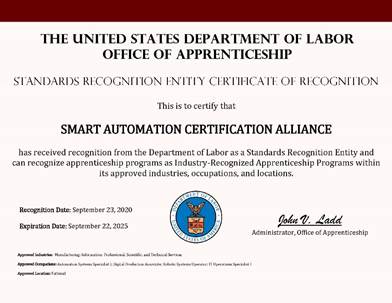
“Made in America”—those words have long stood for the pride that millions take in the U.S. manufacturing industry. Ever since the end of World War II, generation after generation of American workers has pushed U.S. manufacturing to new heights.
With the invention of computers and then the Internet, manufacturing—both here in the U.S. and around the world—has been transformed by a variety of advanced automation technologies. This new wave of automation has had a positive impact on manufacturing efficiency and productivity, right?
“Not so fast…” is actually the answer that some researchers are now giving in light of new data. In a recent Information Technology & Innovation Foundation article, author Robert D. Atkinson notes that “labor productivity in U.S. manufacturing, which grew steadily throughout the post-war era until 2010…has slid” and become stagnant over the last decade and a half.
So what gives? It’s clear that modern automation technologies are revolutionizing manufacturing in many areas. Likewise, no one would dispute that these technologies can and do make manufacturing more efficient and productive. So why do statistics show “U.S. manufacturing is becoming less productive?”
Atkinson argues that it’s likely that U.S. manufacturing productivity stagnation could be due to insufficient technological investment, especially from the federal government. That’s right. It’s very possible that governmental leaders have slept on manufacturing productivity for too long, allowing other countries to become more competitive than the U.S.
For example, Atkinson believes that many new technologies, such as “IoT, 3D printing, robotics, and AI,” “seem to have produced more excitement than output” to date. Why would this be the case? According to Atkinson, “one reason for the stagnation in manufacturing productivity is that, according to the National Science Foundation, just 23 percent of U.S. manufacturers were engaged in process innovation, which improves how things are manufactured.”
Moreover, other countries are outpacing U.S. investment in new technologies. For example, “China leaves the United States in the dust when it comes to robot adoption…China installs 12 times more manufacturing robots than would be expected given its wage levels, while the United installs only 73 percent as many as we would expect.”
Atkinson lays a lot of the blame at the feet of the federal government: “frankly, the level of support that the U.S. government provides to incentivize manufacturing technology adoption is pitiful. Japan invests 55 times more in manufacturing support for small and medium-sized enterprises than does the United States, while Germany invests 6 times more.”
What could be done to improve things? Atkinson would like to see “a temporary 25 percent investment tax credit lasting six years to spur a surge of investment in new machinery, equipment, and software” paired with the creation of “a network of five or six automation institutes across the nation that focus on helping U.S. manufacturers automate work and boost productivity.”
The author urges the Department of Commerce to take U.S. manufacturing productivity stagnation seriously “for two main reasons. First, real wages cannot grow faster than productivity growth. Second, without productivity growth (or a serious decline in the value of the dollar), U.S. manufacturing will increasingly find itself at a competitive disadvantage.”
If the federal government heeds Atkinson’s advice, it will also need to dedicate increased resources to training current and future workers to ensure skilled personnel are available to operate, maintain, troubleshoot, and repair advanced automation technologies as they are implemented.
As companies embrace new technologies, they will often need to either upskill current workers or hire new workers with the advanced automation technology skills they require. If hiring new workers ends up being part of their automation implementation plan, manufacturers should look for candidates with industry-standard credentials that prove they already possess the advanced automation skills needed to thrive.
For example, if workers possess a certification from the Smart Automation Certification Alliance (SACA), employers can feel confident they’ve already proven they have the knowledge and hands-on skills needed for working with advanced smart automation technologies.
SACA has been hard at work collaborating with industry leaders to develop a wide variety of industry-standard certifications that will help employers find workers who possess the advanced connected-systems skills they need to take their businesses to the next level. Be sure to check out SACA and all it has to offer!





